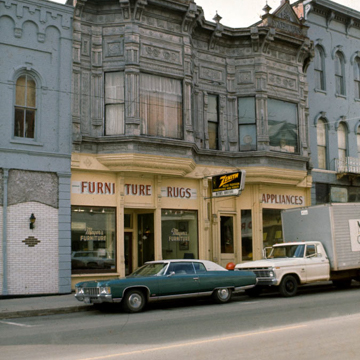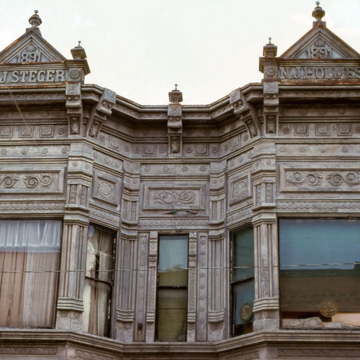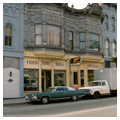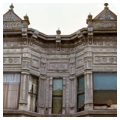Hudson's location on the Tiffin River and the subsequent arrival of the railroad assured the town's growth, and the stores along W. Main Street became the trading center for the surrounding farms. In Hudson the stores were created with as much care as the houses, often employing designs and details from architectural pattern books. The buildings along this street are visually linked by the dominance of round-arched windows, bracketed cornices, and reddish-orange brick building material. Much of the brick was produced at a local brick and tile manufacturing company, where, according to the 1869 Hudson City Directory, Joseph McKenzie employed a patented brick machine. The design for the arcuated brick cornices for Meyer's Department Store (1880s) at 304 W. Main Street and those in the Arcade Block at 215–217 W. Main Street were from M. F. Cummings and C. C. Miller's Architecture. Designs for Storefronts, Suburban Houses, and Cottages . . . (1865), published in Troy, New York, the city from which several of Hudson's early settlers came. The round-arched form of brick commercial building was found throughout the nation during the second half of the nineteenth century.
On the western outskirts of Hudson, which is in Hillsdale County, is the handsome Italianate William Treadwell House ( HI9).


















